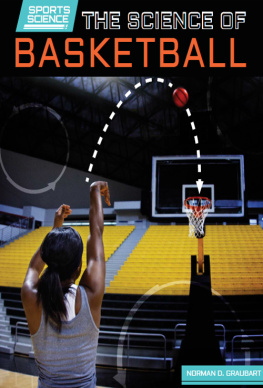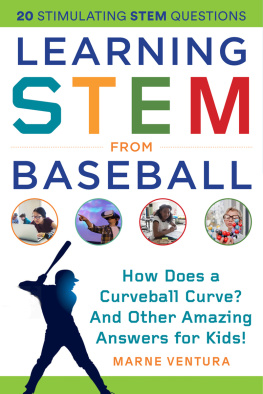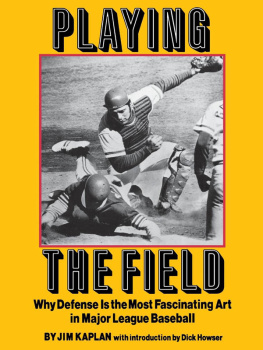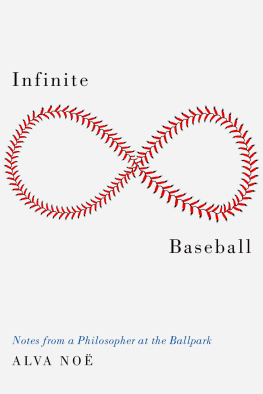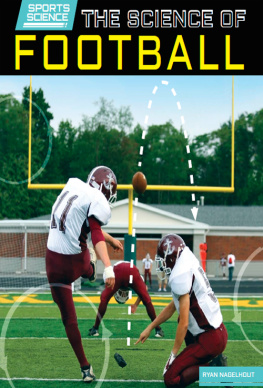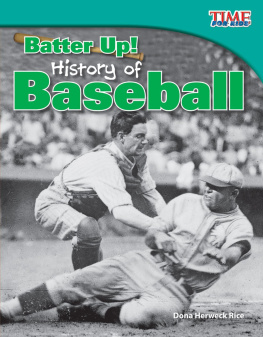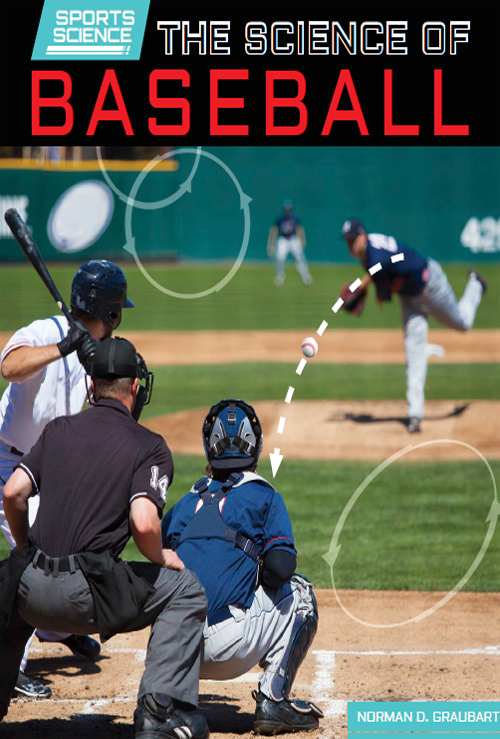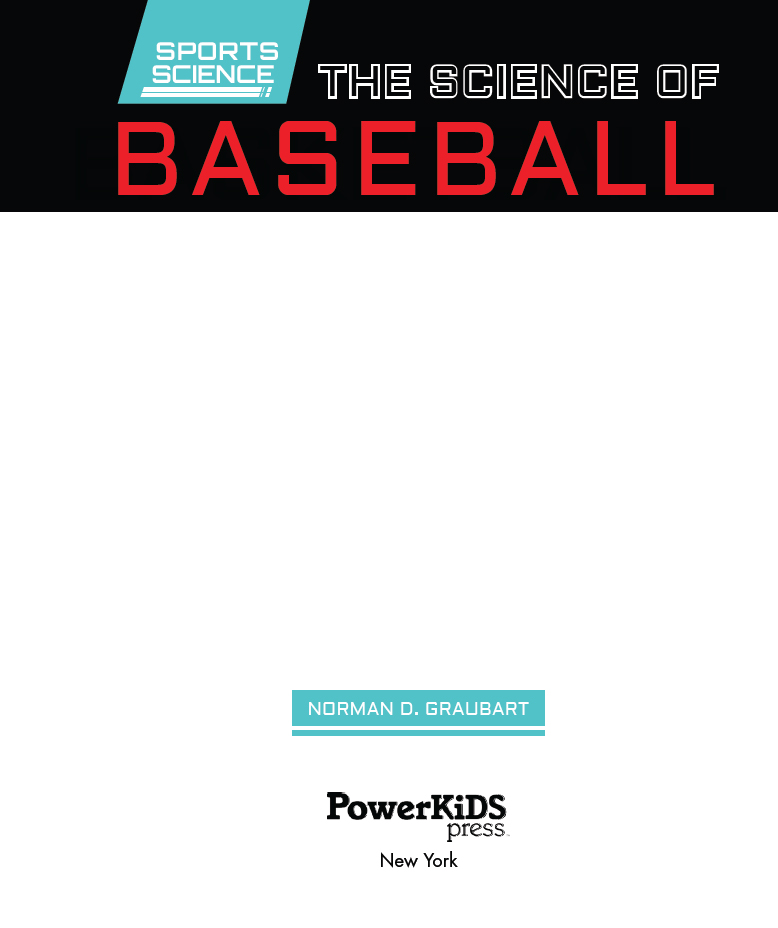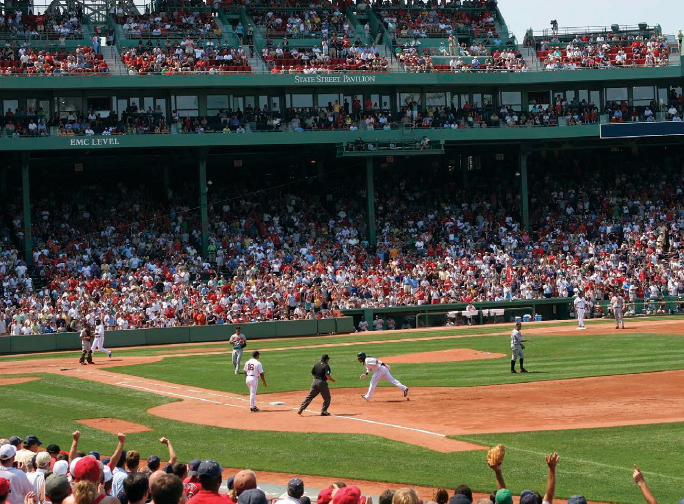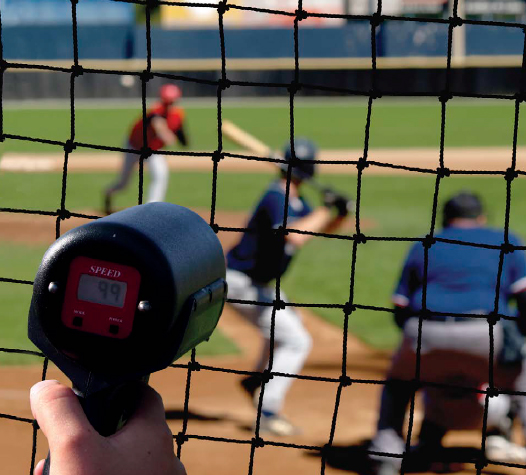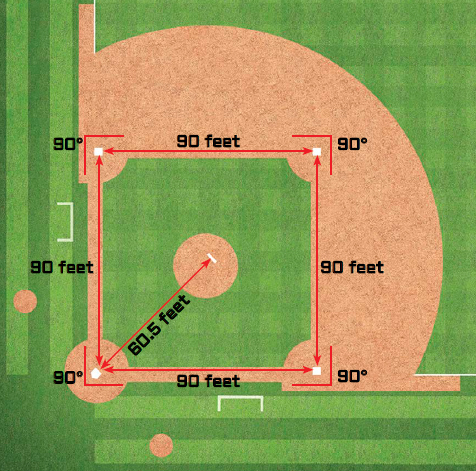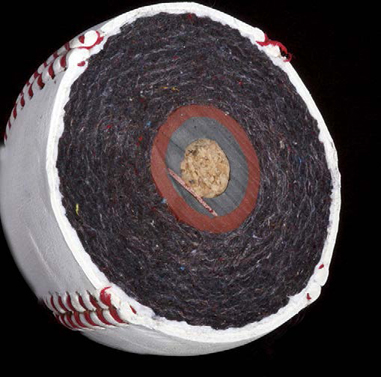Published in 2016 by The Rosen Publishing Group, Inc.
29 East 21st Street, New York, NY 10010
Copyright 2016 by The Rosen Publishing Group, Inc.
All rights reserved. No part of this book may be reproduced in any form without permission in writing from the publisher, except by a reviewer.
First Edition
Editor: Katie Kawa
Book Design: Katelyn Heinle
Photo Credits: Cover Will Hughes/Shutterstock.com; back cover kubais/Shutterstock.com; p. 5 Joy Brown/ Shutterstock.com; p. 7 (baseball scene) colorcarnival/Shutterstock.com; p. 7 (radar gun) iStockphoto.com/ jpbcpa; p. 8 James Steidl/Shutterstock.com; p. 9 Sanit Fuangnakhon/Shutterstock.com; p. 11 (main) Rob Carr/Getty Images Sport/Getty Images; p. 11 (baseball interior) Edward Kinsman/Science Source/ Getty Images; p. 13 Doug Pensinger/Getty Images Sport/Getty Images; p. 15 iStockphoto.com/TerryJ; p. 17 Aspen Photo/Shutterstock.com; p. 19 Norm Hall/Getty Images Sport/Getty Images; p. 21 iStockphoto.com/jgareri; p. 23 PETER MUHLY/AFP/Getty Images; p. 25 The Asahi Shimbun/Getty Images; p. 27 (left) Jamie Roach/Shutterstock.com; p. 27 (right) The Washington Post/Getty Images; p. 29 Eric Broder Van Dyke/Shutterstock.com; p. 30 Lothar Schulz/Getty Images.
Library of Congress Cataloging-in-Publication Data
Graubart, Norman D., author.
The science of baseball / Norman D. Graubart.
pages cm. (Sports science)
Includes bibliographical references and index.
ISBN 978-1-4994-1063-1 (pbk.)
ISBN 978-1-4994-1099-0 (6 pack)
ISBN 978-1-4994-1122-5 (library binding)
1. BaseballJuvenile literature. 2. Sports sciencesJuvenile literature. I. Title.
GV867.5.G6645 2016
796.357dc23
2015008608
Manufactured in the United States of America
CPSIA Compliance Information: Batch #WS15PK: For Further Information contact Rosen Publishing, New York, New York at 1-800-237-9932
A GAME OF HISTORY AND SCIENCE
Baseball is often called Americas game. Early forms of the sport were played as far back as the 1700s. Professional baseball has been around since the late 1860s, following the Civil War. Baseball is still one of Americas most popular sports. Thousands of people go to ballparks to watch professional baseball games, and the sport is played on fields around the world.
What does baseball have to do with science? Science is everywhere! It helps us understand how the sport of baseball really works. It helps us understand why pitchers get tired, why some hits become game-winning home runs, and why catchers and other players use different gloves. This book will help you answer these questions and many more using fun science facts!
Baseball is one of Americas most popular sports. Knowing the science behind the sport makes it even more fun to watch!
MIXING MATH AND SCIENCE
NUMBERS ARE A VERY IMPORTANT PART OF EVERY BASEBALL GAME, SO UNDERSTANDING MATH HELPS US BETTER UNDERSTAND BASEBALL. KNOWING HOW TO ADD, SUBTRACT, MULTIPLY, AND DIVIDE ALLOWS PEOPLE TO COMPARE BASEBALL PLAYERS IN A CLEAR WAY. MATH IS ALSO AN IMPORTANT PART OF PHYSICS, OR THE SCIENCE OF ENERGY AND HOW IT INTERACTS WITH MATTER. PHYSICS CAN BE SEEN IN ACTION DURING EVERY PLAY OF A BASEBALL GAME.
WHAT ARE STATS?
People have been keeping track of baseball players and teams statistics since professional baseball began. A statistic, or stat, is a number that stands for a piece of information. Stats are used in all sports to compare players and teams, but theyre especially important in baseball because the game is filled with so many numbers. People who study stats are called statisticians or analysts. To be a baseball statistician, you have to be good at math.
Baseball statisticians figure out a lot of stats using percentages, or parts of a whole. Statisticians now use computers to help them find and compare baseball stats. However, its still good to know how to use math on your own to compare the stats of your favorite baseball players.
RADAR GUNS
ONE OF THE MOST IMPORTANT NUMBERS IN ANY BASEBALL GAME IS THE SPEED OF EACH PITCH. THIS CAN BE MEASURED USING RADAR GUN TECHNOLOGY. RADAR GUNS WORK BY SHOOTING A BEAM OF ELECTROMAGNETIC WAVES AT A BASEBALL. THE WAVES THEN REFLECT, OR BOUNCE, BACK TO THE GUN AFTER HITTING THE BASEBALL, AND A SENSOR IN THE GUN USES THE REFLECTED WAVES TO MEASURE THE BALLS SPEED.
EXTRA POINT
A special group called the Society for American Baseball Research (SABR) uses statistics and other kinds of math to study baseball.
Radar guns help statisticians compare different players pitching speeds.
THE INFIELD AND ANGLES
Picture a baseball field from above. Look at the bases in the infield. They form a shape thats often called a baseball diamond, but it could also be called a baseball rhombus. A rhombus is a shape with four equal sides and opposite angles that are equal to one another.
A baseball diamond could have another name, tooa baseball square! A square is a special kind of rhombus with four equal sides and angles. All the lines between the bases on a baseball field are equal in length. Also, all the angles between these lines are 90 degrees. Angles that measure 90 degrees are known as right angles. A square is a shape with four right angles.
This is an example of a professional baseball infield. Many things about the game can change from stadium to stadium, but the dimensions and shape of the infield always stay the same.
EXTRA POINT
The dimensions of a softball infield are different from those of a baseball infield. There are 60 feet (18.3 m) between the bases on a softball field.
IDENTICAL INFIELDS
NO MATTER WHAT THE STADIUM MAY LOOK LIKE, ALL PROFESSIONAL BASEBALL INFIELDS HAVE THE SAME DIMENSIONS, OR MEASUREMENTS. THERE ARE ALWAYS 90 FEET (27.4 M) BETWEEN BASES, AND THERE ARE ALWAYS 60.5 FEET (18.4 M) BETWEEN THE PITCHERS MOUNDSOMETIMES CALLED THE RUBBERAND HOME PLATE.
BASEBALL AERODYNAMICS
Baseballs look like theyre perfectly round. However, the red stitching on them makes it so theyre not perfect spheres. The stitching actually affects how the ball is thrown and hit.
Pitchers are able to adjust the balls movement using air resistance. Air is made of molecules like everything else. When a ball moves through the air, the air molecules push back on it. Pitchers throw the ball differently to allow different parts of the stitching to catch the air. Air flows differently around each area of the stitching, making the ball rise, curve, or drop unpredictably. A branch of science called aerodynamics studies the way air moves around objects, such as baseballs, and the way objects move through the air.


